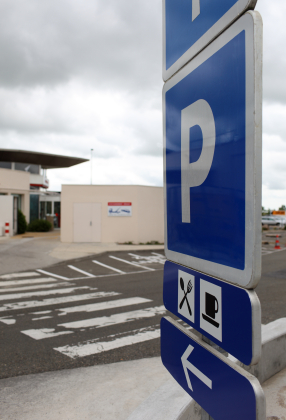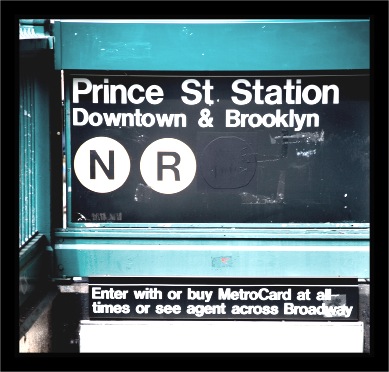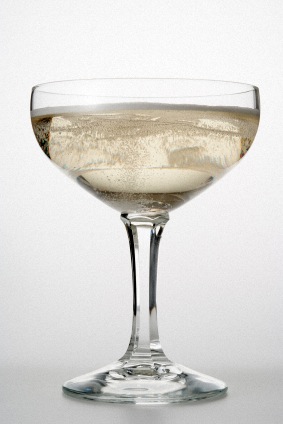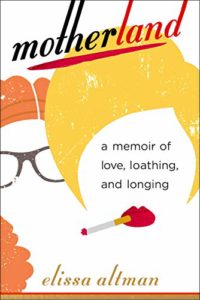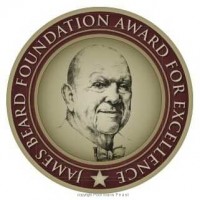We were at the Vince Lombardi Rest Stop in New Jersey, standing in the Popeye’s line.
“I guess we could have the biscuits,” Susan said, squinting over my shoulder at the guy manning the fryolator.
“Can’t–” I shook my head. “…white flour.”
“We’re on a freaking line at Popeye’s, and you’re worried about white flour? What were you expecting—spelt?”
We’d already passed up the shrink-wrapped hard-boiled eggs at the sundries shop, where you could also buy tee shirts emblazoned in spangles with the words New Jersey Turnpike across the front. I love hard-boiled eggs, but shrink-wrapping them just seems to be a particular affront to chickens everywhere. De-beaking and cramming the poor things into foot-square cages in darkened halls of misery is bad enough, but then cloaking their eggs in a hermetically sealed plastic condom to sell in a fake straw basket for a dollar a piece on the Turnpike in Jersey is really where I draw the line.
So we sized up our options: Cinnabon. Burger King.
And Popeye’s.
I ordered a small bag of deep fried drumsticks.
“Ma’am,” the lady behind the counter said to me, “if you add a Sweet Tea you can make it a meal and save a few dollars.” She held up an empty 64 ounce cup that looked like a cross between a double 7-Eleven Big Gulp, and a laundry basket.
An hour later, somewhere north of the Palisades, I began to groan, my ankles started to leach out over the sides of my shoes, and I couldn’t get my rings off. I opened my bag and took a double dose of Crestor just to keep my arteries propped open.
But really, it didn’t matter — the biscuit, the deep fried chicken, the possibility of having a 1,080 calorie caramel pecan Cinnabon — thanks to one of the most important American food rules that Michael Pollan never talks about, because he probably feels he doesn’t have to. We all know this rule the way we know the sky is blue.
America’s Most Important Food Rule
So long as you’re getting from Point A to Point B by plane, train, bus, or automobile, culinary and nutritional time stops. Food ceases to matter. Health issues flitter away like moths in a storm; gastronomical quality is neither assumed nor expected. Calories, fat—all of it stops counting. While you’re on the road, your blood cholesterol automatically plummets to that of an infant born to vegan parents in south Asia.
Haven’t you heard?
Everyone in America knows about The Rule. And clearly, every fast food concession at every rest stop, bus stop, train station, and airport in our country is completely aware of The Rule, too. If they weren’t, it’d sort of make you scratch your head in a shooting-fish-in-a-barrel kind of way, wouldn’t it?
According to the National Air Traffic Controllers Association, 1.5 million people travel by air every day in this country. Add to this number the 870,000 people who travel by Amtrak every day, and right there you’ve got almost 2.4 million tired and hungry travelers looking for a snack while on the road. Of those 2.4 million, how many are diabetic, or pre-diabetic, or suffer from metabolic syndrome? How many are celiacs? How many are vegetarians, or vegans, or Hindu, Kosher, Halal, and don’t eat meat, or dairy, or beef, or pork? How many are fending off any number of problems — cancer, heart disease, obesity? How many are just careful eaters who want to feed themselves and their kids decent, simple food, and are looking for something reasonably fresh, like maybe an apple that didn’t get picked in another hemisphere at the proverbial height of goodness, doused with some godforsaken preservative, and then shipped to the food court at JFK? How many are looking for a tomato on their sandwich that doesn’t taste like a cotton ball, and that wasn’t picked by those nice hardworking folks down in Immokalee?
Odds are pretty great that of those 2.4 million people, a good portion of them fall into at least one of the categories above. And if they have nothing to eat that hasn’t been processed, packaged, laden with sugar, fat, salt, grown in a factory, and shellacked with chemical preservatives produced in a test tube, you’re looking at what could arguably be considered the nation’s largest food desert. This is the clogged artery connecting the north to the south, the east coast to the west, and every single community in between.
Welcome to travel in America. All aboard.
I don’t rant often. But I spent most of last week on the road, and after four days in and out of train stations, I came to the very harsh realization that this issue — the problem of the food desert — extends far beyond the poor cities and rural areas where people are sitting ducks, and where no one can get their hands on fresh food. The situation is much graver than any one of us thinks, because of The Rule: as Americans, we are used to either ignoring the quality of the food to which we have access when we’re traveling, or we’re just plain comfortable with eating dreck because it comes with a toy or a 64-ounce sweet tea, and so the problem of the American food desert is much more insidious and pervasive. And because it’s so pervasive, it’s also much more democratic.
It doesn’t matter if you live in Greenwich, Nob Hill, Soho, Austin, Kansas City, Mill Valley, Charlottesville. Boca, Ames, Santa Barbara, Compton, Aspen, Park Slope, or Detroit. It doesn’t matter if you’re white, black, Asian, Latino, rich, poor, short, tall, gay, straight, thin, fat, Jewish, Catholic, Buddhist, Methodist, Baptist, Pentecostal, Mormon, Muslim, a vegan, a carnivore, a celiac, a PhD, a dropout, or you just came back from a year in Tanzania on a Fulbright. It doesn’t matter if you’re a Liberal or a Republican, or a sack-suited, horn-rimmed Neo-Con still crying over the death of Irving Kristol. If you live in America and you travel anywhere — by bus, by train, by plane, or by car — you’re spending nearly every single one of those traveling moments in the largest food desert in the country. Like it or not, this is a cross-the-aisle problem.
To be clear: you may not be faced with having to wring a solid dinner for your kids out a bag of pork rinds and a box of dried soup mix that you bought from the corner store that specializes in lottery tickets and Colt 45, but for the hours or days that you’re in a metal tube, hurtling from Point A to Point B, you are that sitting duck I speak of above, and make no mistake: fast food companies are well aware of it. They will continue to do all they can to make absolutely sure that you’re stuck eating what they make available to you — what they decide they want you to eat — and little else. Otherwise, all those nice people hawking cheap sunglasses outside every rest stop in the country would be replaced by local farmers selling fresh food instead, and those Best Buy machines that vend iPads and Bose Headphones for hundreds of dollars would be dispensing organic fruit. It’s so nice to know where our priorities are.
Culinarily-speaking, I lead a life of rosy bliss: I have a pantry judiciously stocked with gorgeous grains and heirloom beans. My freezer is filled with interesting nuts and flours and grass-fed beef from a local cow. I’m lucky enough to have a traditional, small-batch tofu producer right down the road. So far this season, I’ve harvested two rounds of organic French Breakfast Radishes and re-planted Rosa Bianca eggplants in their place. This summer, we’re building a six-bed vegetable garden in our yard, complete with white cedar picket fence and pea-gravel paths. Nothing that is not real ever — ever — passes these lips. I think, talk, and write about food constantly. But for me, food deserts and the real way people eat in this country are purely conceptual issues that make me mad: I never actually get to experience the dire lack of availability of fresh food that is so rampant in this country until I’m sitting in a food court and waiting for a train or a plane, or stopping off at a rest area anywhere on the Eisenhower Highway System. It’s only when I step outside my culinary Ivory Tower that I get to experience — palpably — how hideous things are in the real world while the rest of us are complaining that the price of imported burrata has gone through the roof.
What to do? It’s complicated: you could be like my stepmother, who refuses to leave her house without carrying more fruit than Carmen Miranda. You could go the Heidi Swanson route, and cook for yourself ahead of time (just pray that the TSA doesn’t confiscate your quinoa patties while you’re going through check-in). Even David Tanis, the former chef at Chez Panisse, has written about cobbling together a small emergency food kit for himself, which includes a tube of Harissa. This is all very nice, and even delicious, if a bit unrealistic for the average American traveler. Last summer, I came up with the plan to stop at local farmer’s markets whenever I was on the road, and to stock a small cooler with fresh fruit, cheese, and whatever else I found that caught my eye and would travel well. (Look for complete-ish listings of national farmer’s markets by going here, and also visiting NOFA, if you’re in the northeastern United States).
Whatever you choose to do — eat that shrink-wrapped hard-boiled egg or the preservative-sprayed apple or the bag of deep-fried drumsticks, or not — remember that this Rule that says eating while traveling doesn’t really count is a construct manufactured and perpetuated by folks who have far less than your health at heart.
And remember, too, that rules are made to be broken.
